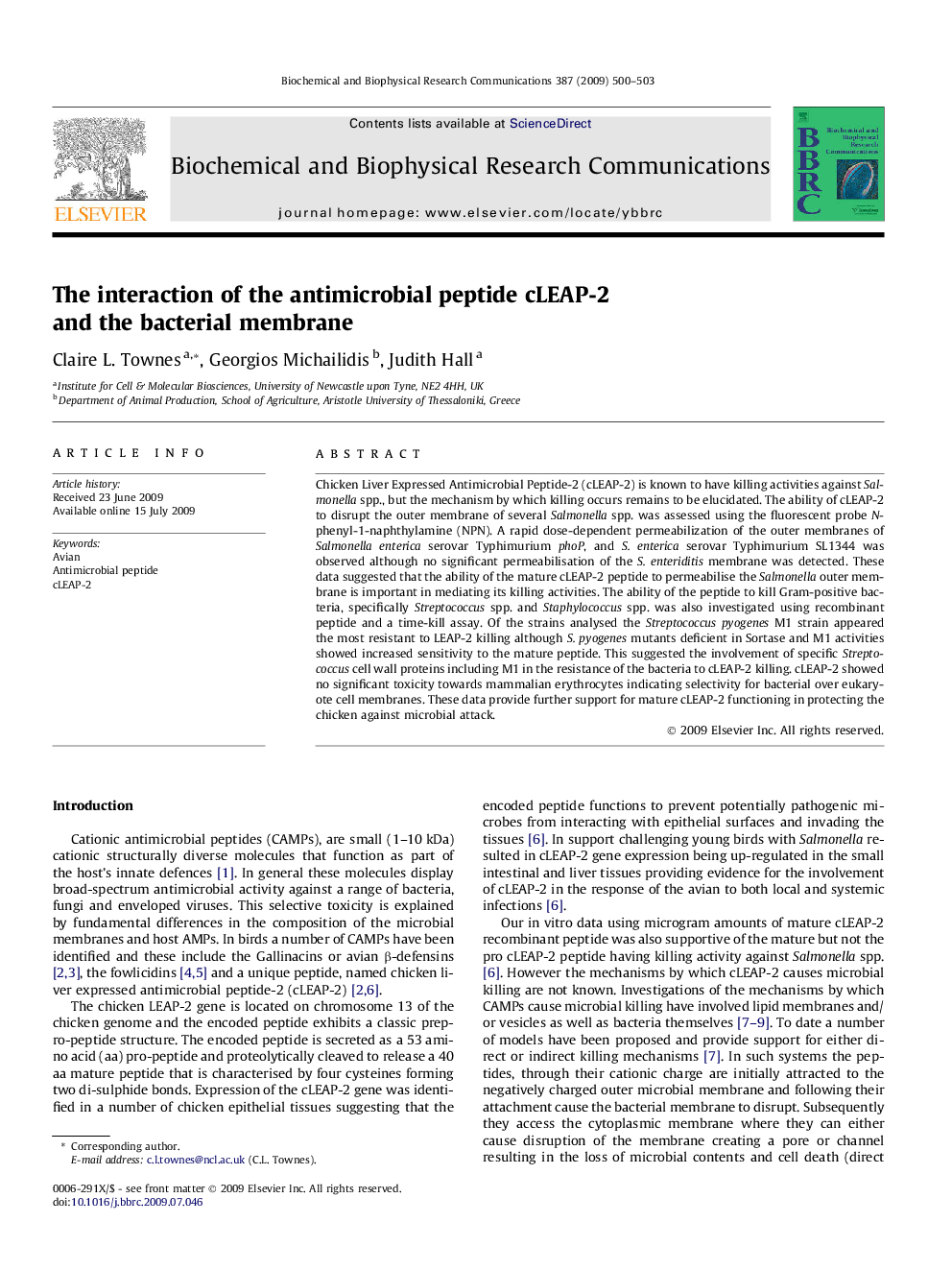| Article ID | Journal | Published Year | Pages | File Type |
|---|---|---|---|---|
| 1933121 | Biochemical and Biophysical Research Communications | 2009 | 4 Pages |
Chicken Liver Expressed Antimicrobial Peptide-2 (cLEAP-2) is known to have killing activities against Salmonella spp., but the mechanism by which killing occurs remains to be elucidated. The ability of cLEAP-2 to disrupt the outer membrane of several Salmonella spp. was assessed using the fluorescent probe N-phenyl-1-naphthylamine (NPN). A rapid dose-dependent permeabilization of the outer membranes of Salmonella enterica serovar Typhimurium phoP, and S. enterica serovar Typhimurium SL1344 was observed although no significant permeabilisation of the S. enteriditis membrane was detected. These data suggested that the ability of the mature cLEAP-2 peptide to permeabilise the Salmonella outer membrane is important in mediating its killing activities. The ability of the peptide to kill Gram-positive bacteria, specifically Streptococcus spp. and Staphylococcus spp. was also investigated using recombinant peptide and a time-kill assay. Of the strains analysed the Streptococcus pyogenes M1 strain appeared the most resistant to LEAP-2 killing although S. pyogenes mutants deficient in Sortase and M1 activities showed increased sensitivity to the mature peptide. This suggested the involvement of specific Streptococcus cell wall proteins including M1 in the resistance of the bacteria to cLEAP-2 killing. cLEAP-2 showed no significant toxicity towards mammalian erythrocytes indicating selectivity for bacterial over eukaryote cell membranes. These data provide further support for mature cLEAP-2 functioning in protecting the chicken against microbial attack.
